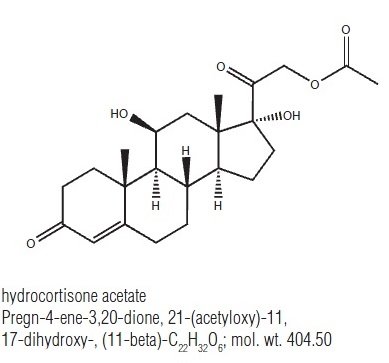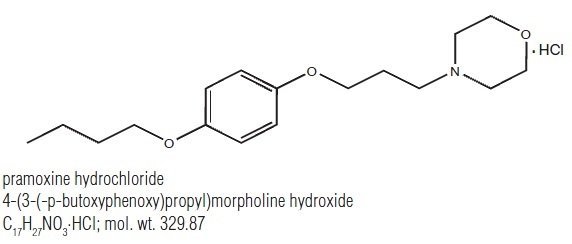Hydrocortisone and Pramoxine Cream Singles
Generic name: hydrocortisone acetate, pramoxine
Dosage form: cream
Drug class:Anorectal preparations
Medically reviewed by Drugs.com. Last updated on Oct 22, 2021.
Disclaimer: This drug has not been found by FDA to be safe and effective, and this labeling has not been approved by FDA. For further information about unapproved drugs, click here.
On This Page
DESCRIPTION: Hydrocortisone Acetate 2.5%-Pramoxine HCl 1% Cream is a topical preparation containing Hydrocortisone Acetate 2.5% w/w and Pramoxine HCl 1% w/w in a hydrophilic base containing Purified Water, Petrolatum, PEG 40 Stearate, Mineral Oil, Ceresin Wax, Cetostearyl Alcohol, Stearic Acid, TEA-Lauryl Sulfate, Isopropyl Palmitate, Carbomer 940, Methyl Paraben, Propyl Paraben, Citric Acid, Sodium Citrate and Triethanolamine. Topical corticosteroids are anti-inflammatory and anti-pruritic agents. The structural formula, the chemical name, molecular formula and molecular weight for active ingredients are presented below.


CLINICAL PHARMACOLOGY: Topical corticosteroids share anti-inflammatory, anti-pruritic and vasoconstrictive actions. The mechanism of anti-inflammatory activity of topical corticosteroids is unclear. Various laboratory methods, including vasoconstrictor assays, are used to compare and predict potencies and/or clinical efficacies of the topical corticosteroids. There is some evidence to suggest that a recognizable correlation exists between vasoconstrictor potency and therapeutic efficacy in man. Pramoxine hydrochloride is a topical anesthetic agent which provides temporary relief from itching and pain. It acts by stabilizing the neuronal membrane of nerve endings with which it comes into contact.
Pharmacokinetics: The extent of percutaneous absorption of topical corticosteroids is determined by many factors including the vehicle, the integrity of the epidermal barrier and the use of occlusive dressings. Topical corticosteroids can be absorbed from normal intact skin. Inflammation and/or other disease processes in the skin increase percutaneous absorption. Occlusive dressings substantially increase the percutaneous absorption of topical corticosteroids. Thus, occ...



